What Is The Fed?
What if I told you that paying attention to and understanding the Federal Reserve System is more critical to your investments now than in the past decade?
Even better, what if I told you that spending time to understand the ins and outs of the Federal Reserve will give you a significant financial edge, instead of inducing rage and a migraine?
Well, you’re in luck. Everything you need to understand the Federal Reserve is right here at your fingertips.
The U.S. Federal Reserve System, or the “Fed” as it’s sometimes called, is one of the most misunderstood institutions in our country. And yet, it arguably plays the most critical role in the United States economy. The key to predicting 2015 market trends is watching, and ultimately understanding, the Fed.
Ask Joe Schmo in your cubicle or the pink-haired teen making your latte – I’ll bet you they have no idea how the Fed works. And, if they had a vague notion, they wouldn’t be able to explain it to you. And they definitely couldn’t tell you why its decisions have such an impact on our economy and your wallet.
But fear not, dear reader, I am here to help make sense of the nonsense. Allons-y! [Let’s go!]
What Is The Fed? – The Fed’s Original Mission
In plain terms, the Fed is America’s central bank. It also regulates the country’s banks.
The U.S. Congress created the Federal Reserve System in 1913, with the signing of the Federal Reserve Act by then-president Woodrow Wilson. Their mission was to provide the nation with a safer, more flexible, and more stable monetary and financial system. Planning for such a system was very hush-hush… with a small group of elite bankers, businessmen and politicians meeting in 1907 at a secluded resort on Jekyll Island in Georgia.

President Woodrow Wilson signing the Federal Reserve Act in 1913. Rumor has it he signed the act with four gold pens…
Over the course of a century, however, the Fed’s mission has creeped. Today, it regulates interest rates and the amount of money in the economy. By making more or less money available, they hope to ensure economic growth and prevent downturns.
It also studies economic trends and makes policy decisions on how to make the economy healthier and, well, function better. [Interesting note: The Fed employs more than 200 economics Ph.D’s]
According to the Federal Reserve’s official website, its mandate is “to promote sustainable growth, high levels of employment, [and] stability of prices to help preserve the purchasing power of the dollar and moderate long-term interest rates.”
At the risk of sounding like a broken record (repitition’s the best way to learn, n’est–ce pas?), they also list four general duties including, and we quote:
- conducting the nation’s monetary policy by influencing the monetary and credit conditions in the economy in pursuit of maximum employment, stable prices, and moderate long-term interest rates
- supervising and regulating banking institutions to ensure the safety and soundness of the nation’s banking and financial system and to protect the credit rights of consumers
- maintaining the stability of the financial system and containing systemic risk that may arise in financial markets
- providing financial services to depository institutions, the U.S. government, and foreign official institutions, including playing a major role in operating the nation’s payments system
And now, for the plain English translations. Ahem, the Fed:
- Decides the right amount of money there should be so life for Americans’ is as peachy as possible…
- Makes sure the fat cats on Wall Street play by the rules… so moi, you and the entire economy doesn’t get fudged over…
- Acts like a bank to banks and the U.S. government…
If you’re a visual learner like me, this video is a good 3-minute, infographic crash course on the Fed, courtesy of School House Shock, with a healthy dose of doom and gloom thrown in for good measure:
Don’t get any funny ideas, though.
Despite it’s name, the “Federal Reserve” is neither federal… nor a reserve (more on that below). Instead, it’s an independent agency, which means it can make decisions entirely on its own without approval from any other branch of government. Control over the nation’s money supply… with no strings attached. Otherwise known as a “pretty sweet gig”.
Yes, you read that right. The Fed Chairman, Janet Yellen, is subject to questions from Congress and regularly testifies to both the Senate and the House.
They’re called “Humphrey-Hawkins” hearings. Now you’ll know when you hear the term bandied about on the financial news.
“In response to the stagflation of the 1970s,” one of our readers explains via email, “Congress passed a law in 1978 requiring full employment at low inflation and tasking the Federal Reserve with making that happen. The law was called Humphrey-Hawkins…
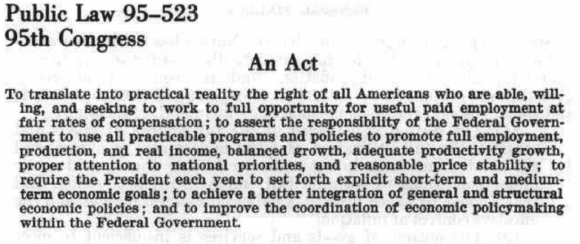
The Humphrey-Hawkins Full Employment Act, 1978
“Humphrey-Hawkins, the law, expired in the summer of 2000,” our reader continues.
“But by that time, the powers-that-be decided that they liked the results of the enforcement of the law requiring full employment at low inflation up to that point. So much so that they decided to continue to enforce it as if nothing had changed.”
The Fed was already in the habit of testifying before Congress twice a year. Rather than discontinue the practice of trying to achieve full employment and low inflation, they simply changed the name of the biannual congressional report to the Humphrey-Hawkins report.
And who’s got it?Right about now might be a good time to mention…. the Fed may have to explain itself from time to time, but it is essentially free from political pressure. It’s nice work if you can get it…
That’s coming up… but first…
What Is The Fed? – Understanding Interest Rate Policy This Year & Beyond
The Federal Reserve is as complicated as it is misleading, despite the fact that it supposedly “speaks with one voice and is of one mind.” You’re probably familiar with Janet Yellen, who serves as Chair of the Federal Reserve. You get two more gold stars if you know that Ben Bernanke and Alan Greenspan were her predecessors. In the past, being familiar with the Chair and their primary views was good enough most of the time. But now is not one of those times.
Before you might’ve only paid attention to the Fed’s harebrained antics by circumstance. Like if you were in a doctor’s office waiting room for an hour while the financial news was playing and you had no way to change the channel… and your phone was out of battery… and the only magazine was Good Housekeeping.
Or, maybe you’ve seen the folks at the Daily Show take turns laughing at the Fed’s expense:
But we digress…
Today, more than ever, it is critical for you to really know the players beyond a surface level. Having an understating of the Fed’s structure and the predilections of its members is your key to understanding interest rate policy over the next year and beyond. In turn, your success or failure as an investor depends on the interest rate.
Meanwhile, Fed watching can be hysterical — if you stop being so serious about everything. It’s been a pastime in these pages since 1999 to mock the Fed for it’s… well… idiotic, reckless decisions. They print money in absurd quantities and inflate the market. They hope to print economic prosperity. Funniest of all — when the charade blows up in their faces — they’re the first people called to clean the whole mess up.
And how do they do that? By printing money in absurd quantities and inflating the market! And so it goes… on… and on… and on… and on…
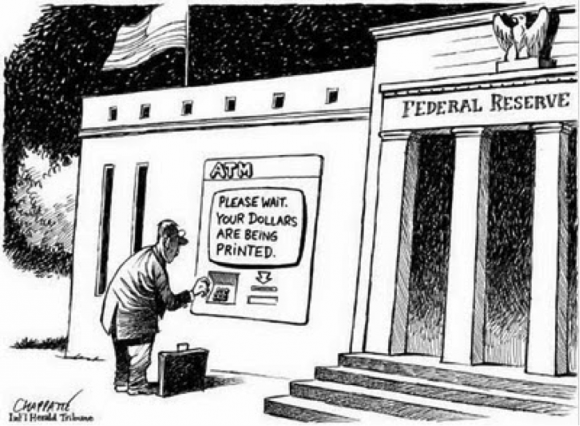
source: http://teachufr.org/robertshand/the-fed’s-dual-mandate/
Even seasoned investors and econ junkies have to stop and wonder about the Fed sometimes. Why is it shrouded in so much secrecy? Ask members of the Fed — and they’ll tell you “Central Bank Independence”. Basically, the excuse goes, if the Fed’s held accountable, it can’t do whatever it wants. And, most Federal Reserve members think the Fed should be able to do whatever it wants — or more accurately “whatever it needs to do” in order to make the economy hum. Like we said, funny stuff…
One of the readers of the financial newsletter, Jim Rickards’ Strategic Intelligence, wanted to dig deeper than that, however. He emailed Jim asking, “Who owns the Federal Reserve? I’ve heard that it is owned by the Rothschilds and Rockefellers plus a few other banks.”
Be careful what you ask for… that’s a loaded question with a complicated answer.
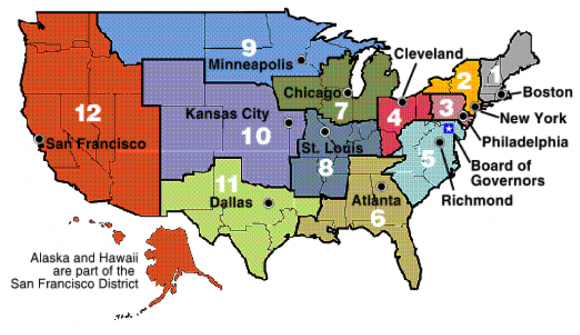
The Fed is a system of 12 regional reserve banks that are privately owned by the commercial banks in each district. The Federal Reserve Bank of New York is the most powerful, and actually carries out the money market operations needed to implement interest rate policy.
The New York Fed also has custody of the largest gold vault in the world, holding about 7,000 tons of gold. But other regional reserve banks in Chicago, Philadelphia, Boston and San Francisco also have a strong voice in policy.
The private board of directors of each bank select the president of each regional reserve bank, and directors are elected by stockholders. In this case, the stockholders are private banks in the region.
The Board of Governors in Washington, D.C oversees these 12 regional reserve banks. The president of the Unites States selects seven governors, which are confirmed by the US Senate. Essentially the Fed is a weird hybrid of private ownership in the 12 regions, with oversight from a politically-appointed board in Washington.
What Is The Fed? – Convoluted Committee
The structure is even stranger when it comes to interest rate policy.
The Federal Open Market Committee or “FOMC” sets the rate policy, not the board of governors or the regional banks.
Here’s an organizational chart of the entire Federal Reserve to show you where the FOMC fits in:
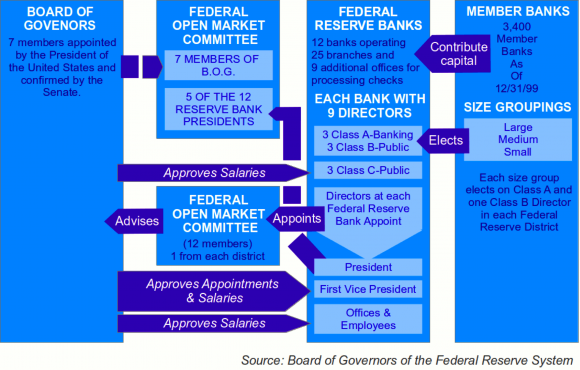
Don’t be daunted by those other terms and titles. Everything you need to know — for your investments and peace of mind — is right here.
The FOMC’s members are composed of five regional reserve bank presidents and seven governors, making for 12 members total. The president of the Federal Reserve Bank of New York has a permanent seat on the FOMC, and the other four seats are taken on a one-year rotation among the remaining 11 regions.
This rotation is important to note because the regional reserve bank presidents are divided into “hawks” and “doves.”
Hawks favor “tight money” or printing less.
Doves favor “easy money” or printing more.
The composition of the FOMC changes every January when four presidents leave and are replaced by four new ones joining the committee.
Confused yet? Hold on to your hat…
It takes a majority of the FOMC — six votes for the time being — to implement policy. Even though members tend to disagree, the votes are mostly unanimous.
And, as if to confuse you even more, FOMC meetings are only eight times per year rather than monthly. Oh, and the dates and months are not identical from year to year. All members of the FOMC take economic guidance from the Fed staff, but the Fed chair is typically an alpha dog personality who can gather votes to get what they want.
Normally I wouldn’t advise you to strain your eyes or waste your time trying to follow all the complexities of the Fed. But these ain’t ordinary times, folks.
The composition of the FOMC and personalities of the individual members matter much more to you now than usual. The global economy has been running on low interest rates for six years now. What central bankers do in the coming months and years could mean the difference between crash or new highs in the stock market. The dollar, bonds, stocks, gold, and commodities all move in related patterns. Figure out what the Fed is going to do (and say), and everything else falls into place.
Their December 2014 meeting produced a 7-3 vote in favor of its policy statement — just one vote more than the bare minimum needed to pass. The FOMC is a far cry from a united front at this critical juncture — it is a house divided.
What Is The Fed? – 2015 FOMC Composition: Hawks vs. Doves
As we mentioned before, knowing the composition of the Fed’s FOMC gives you a significant edge in investing, and makes it far easier to guess if the Fed is leaning toward Quantitative Easing or not, or just how long you can expect the tapering to continue. When it comes to the 2015 Federal Open Market Committee you should ask who is a dove, who is a hawk, and who is a centrist?
To get a better idea, take a look at this chart from the Deutsche Bank:

source: http://snbchf.com/monetary-fiscal-policy/fed-its-fomc-composition/
Here’s each of the current board member’s mug — along with when their terms expire…
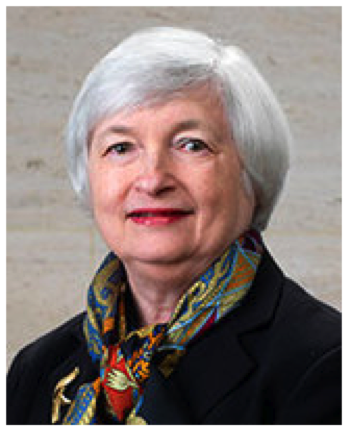
Position: Strong Dove
Janet L. Yellen took office as Chair of the Board of Governors of the Federal Reserve System on February 3, 2014. She’s in for a four-year term that ends on February 3, 2018. As chair, she also heads up what’s called the Federal Open Market Committee or FOMC. That’s the group that makes monetary policy (deciding how much money there should be). Before becoming the big cheese, she was Vice Chair of the Board of Governors, taking office in October 2010, when she simultaneously began a 14-year term as a member of the Board that will expire January 31, 2024.
Stanley Fischer, Vice Chairman
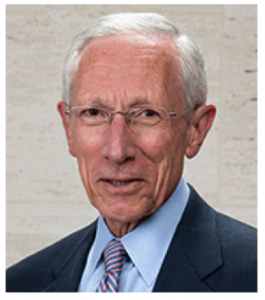
Position: Centrist
Stanley Fischer took office as a member of the Board of Governors of the Federal Reserve System on May 28, 2014, to fill an unexpired term ending January 31, 2020. He was sworn in as Vice Chairman of the Board of Governors on June 16, 2014. His term as Vice Chairman expires on June 12, 2018.
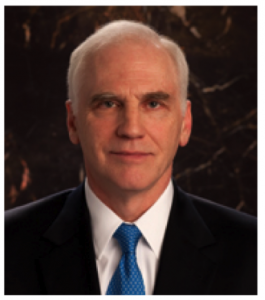
Position: Dove
Daniel K. Tarullo took office on January 28, 2009, to fill an unexpired term ending January 31, 2022.
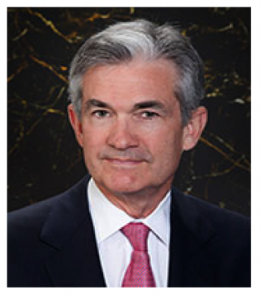
Position: Centrist
Jerome H. Powell took office as a member of the Board of Governors of the Federal Reserve System on May 25, 2012, to fill an unexpired term. He was reappointed and sworn in on June 16, 2014, for a term ending January 31, 2028.
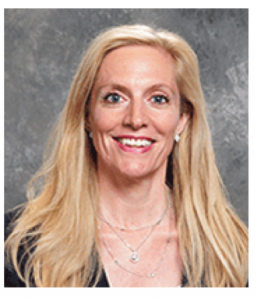
Position: Dove
Lael Brainard took office as a member of the Board of Governors of the Federal Reserve System on June 16, 2014, to fill an unexpired term ending January 31, 2026.
Joining them in the FOMC…
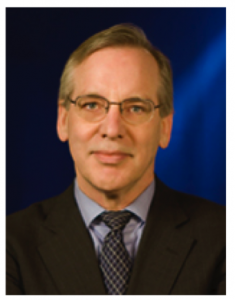
Position: Strong Dove
William C. Dudley took office on January 27, 2009, as the tenth president and chief executive officer of the Second District Federal Reserve Bank, at New York. In that capacity, he serves as the vice chairman and a permanent member of the Federal Open Market Committee, the group responsible for formulating the nation’s monetary policy.
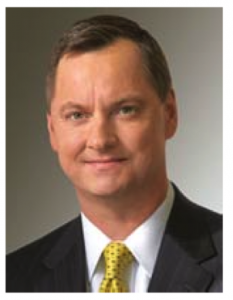
Position: Strong Dove
Charles L. Evans took office on September 1, 2007, as the ninth president and chief executive officer of the Seventh District Federal Reserve Bank, at Chicago. In 2015, he serves as a voting member of the Federal Open Market Committee.
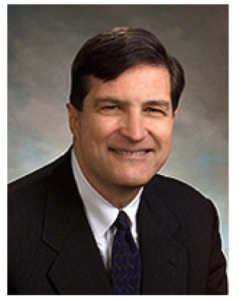
Position: Centrist
Dr. Lacker took office August 1, 2004, as the seventh chief executive of the Fifth District Federal Reserve Bank, at Richmond. He is currently serving a full term that began March 1, 2011. In 2015, he serves as a voting member of the Federal Open Market Committee.

Position: Strong Dove
Dennis P. Lockhart took office March 1, 2007, as the 14th president and chief executive officer of the Sixth District Federal Reserve Bank, at Atlanta. In 2015, he serves as a voting member of the Federal Open Market Committee.

Position: Dove
Dr. Williams took office March 1, 2011, as the twelfth president and chief executive officer of the Twelfth District Federal Reserve Bank, at San Francisco. In 2015, he serves as a voting member of the Federal Open Market Committee.
What Is The Fed? – Why You -and Your Investments- Need to Know
Ok, so now you kind of get it. But why should you care, again?
The Fed has a major impact on the daily lives -and livelihoods- of each and every American. Including you. If they decide to raise interest rates to slow the economy, that house you’ve got your eye on or the car you want to buy could be much more expensive if you are paying off interest on a loan. Same goes for credit card interest rates.
For years investors have made a pretty penny living by the motto, “Don’t fight the Fed.” But when it started whistling a slightly different tune and hinting of a Fed rate hike later this year with small changes in its typical verbiage, investors across the country found themselves in a tailspin.
Basically any kind of debt will cost you more if the Fed decides to raise interest rates, so get rid of it if you can. If you have a variable interest mortgage, now it’s time to switch to a fixed interest rate. If you own a business, don’t expand now unless interest rates continue to play the game of How Low Can You Go?
Two Cents, a financial site at lifehacker.com, does a great job of explaining how the Fed’s decisions have a ripple effect on consumers like you:
When interest rates rise, the market value of bonds, and bond funds, will drop. The cash you get quarterly from your existing investments won’t change, but bond value and interest rates move inversely: when one goes up, the other goes down.
Therefore, when you rebalance and sell some of your bond funds, expect a loss. On the other hand, as rates continue to rise, you can expect the return on new investments to continue rising soon.
On a larger scale, rate hikes in general can lead to bad things in the economy. Unemployment rates go up, layoffs increase, and rising interest rates almost always mean a recession is coming. While you can never predict exactly when the next crash will be, an interest rate hike starts the “crash watch,” which explains why so many folks are focused on what the heck the Fed is up to lately.
But, from the perspective of an investor, understanding the Fed’s background is critical to assessing market expectations about policy, and whether or not those expectations are legit.
Federal Reserve Bank President Richard Fisher of Dallas and former President Charles Plosser of Philadelphia were both super-hawks, and they were not pleased with the Fed’s easy money policies. But, as of January, both Fisher and Plosser left the FOMC. Their replacements were two super-doves we mentioned above: John Williams of the San Francisco Fed and Charles Evans of the Chicago Fed.
In October of last year, Jim Rickards sat down with Fox Business to discuss if and when the Fed will start QE4 in 2015. Click on the video below to see his perspective on the new FOMC members, and the Fed’s plans for 2015.
As we mentioned, joining them in the new FOMC are Dennis Lockhart of Atlanta and Jeffrey Lacker of Richmond.
I reached out to Jim Rickards on this one to see what his tea leaves are telling him, five months later. He informs us:
Lockhart is known as a moderate, but he has voted with the doves in the past and is often in sync with the dovish Evans. Lacker is less ideological and more data driven. He will vote with the doves if the data are weak. As for the governors on the FOMC, they are a more cohesive group and are all reliably in Janet Yellen’s camp if she wants to steer policy in a particular direction.
Yellen herself is data driven but has dovish inclinations. She’s revealed her strong support for quantitative easing (QE) in her public speeches, emphasizing slack in labor markets as a rationale for not raising rates.
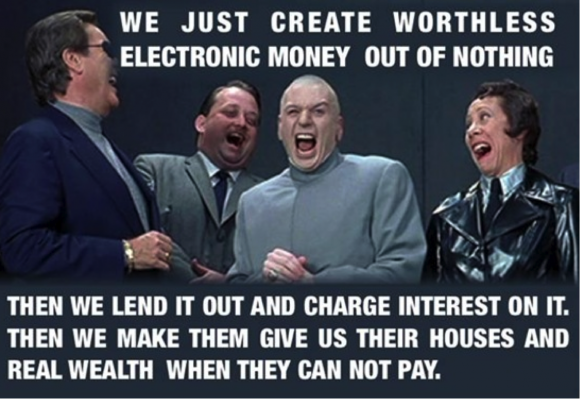
Left to right; Stanley Fischer, Daniel Tarullo, Janet Yellen, and Lael Brainard. Jerome Powell not pictured. Federal Reserve meeting 2015.
What Is The Fed? – Future Forecasts
If you listen to the economists on Wall Street, growth forecasts for the next five consecutive years are excessively optimistic. But we believe you’d be smart to be skeptical about any rosy scenarios for 2015.
As things currently stand, markets are priced for a Fed interest rate increase by midyear. Some analysts have been pushing back an expected increase to the fourth quarter, but a rate increase in 2015 isn’t completely off the table.
Janet Yellen has said that the Fed will not raise rates before the April 2015 FOMC meeting, but even that may prove an unlikely turning point. The Fed is caught in a pickle of its own making after keeping interest rates too low for too long.
How else can you learn investing lessons by watching the Federal Reserve?
One strategy is to focus on the Fed’s words, rather than actions. Ever heard of “Fedspeak”? Alan Greenspan’s own cryptic style of speech is what coined the term in the first place. Phrases like “measured,” “policy accommodation,” and “irrational exuberance” were the buzzwords of yore, but currently, everyone is obsessing over the selection of the word of “patient.”
“Patient,” in the Fed’s world, is a euphemism for “we ain’t changing squat.” MarketWatch reports:
While the Fed was being patient, rates were not going to rise. It’s important to recognize, however, that excluding the word did not mean the central bank was moving all the way to “impatient.”
In an individual’s lexicon, being patient, therefore, amounts to sticking with an investment versus putting it on the “watch list.” When patience starts wearing thin, it’s a sign that you might want to reconsider an investment, shorten the leash that you give a fund manager or a stock when it comes to disappointing performance, and start to think of what your next move might be.
What Is The Fed? – When’s the next Fed Meeting?
For your reference, below is the Fed’s 2015 Meeting Schedule, taken from the Federal Reserve website:
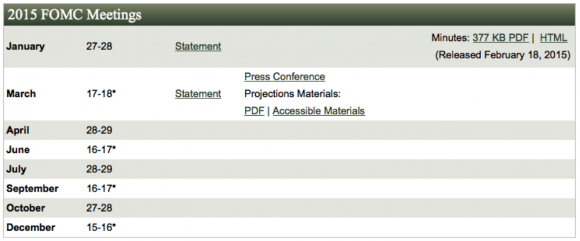
All this buzz about raising rates has made the dollar stronger because of money that has flowed into the U.S. from around the world in search of yield. But the strong dollar is deflationary because imports cost less in dollar terms.
The conclusion to really pay attention to: considering the strong dollar, the deflationary trends, the weak labor markets, and the dovish composition of the new FOMC, it appears likely that no interest rate will happen in 2015.
In fact, by early 2016 we could be looking at another round of QE if the economy remains weak.
This scenario, if it plays out as we expect, could be very bullish for U.S. equity markets. As things currently stand, equity markets are priced for a rate hike in mid-2015. But when the markets figure out that easy money policies ain’t going anywhere in 2016, you can anticipate an upward thrust of the bull market and a level of 2,200 or higher on the S&P 500 index would not be all that surprising.
I’ll leave you with another nugget, and 2015 recommendations, from Mr. Rickards:
You should never go “all in” on stocks. Certain bubble dynamics are at work, and a substantial stock market collapse in the years ahead is foreseeable. This is why I have always recommended a substantial cash component for your portfolio to reduce volatility and preserve your wealth in case a crash comes sooner than expected.
But for 2015, the Fed still rules the roost, and a decision to delay rate hikes until at least 2016 could be just the tonic needed to keep this long equity bull market alive for another year. Expect short-term spikes in oil, gold and other hard assets when the Federal Reserve signals it will not raise interest rates in 2015.
À tout à l’heure,
Genevieve LeFranc
for The Daily Reckoning
P.S. If you’re fired up and ready for some more cold, hard facts about the economic institutions of our country, stay tuned for a detailed timeline history of our nation’s currency. Meanwhile, why don’t you click here and sign up for the Daily Reckoning? That way, you’ll receive daily insight, advice and laughs to help you navigate the dizzying world of finance. Did we mention it’s free? Because it is. Click here to sign up now!



Comments: